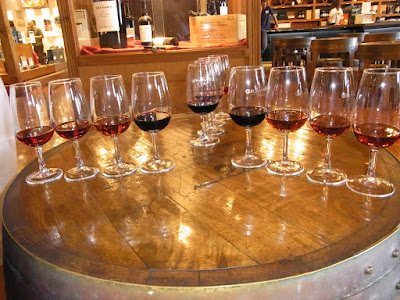
White Port & tonic is typically served in a tall glass filled with ice & a slice of lemon
Spring has sprung which means that summer is just around the corner. If you’re looking for a new, super-refreshing summer aperitif, I have just the drink from you. And, it’s easy-peasy as there are only two liquid ingredients!
The view I had for my first White Port & TonicI had my first Port & Tonic at a famous restaurant owned by the illustrious Taylor-Fladgate Port company in the seaside town of Porto. It was a scorching 100 degree day and the restaurant was a twenty minute walk from the only parking we could find. Shortly after we were seated at the above table, we were served an unsolicited drink as a welcome gesture. I was a raving fan with my first sip. It was one of the most sublimely tasting and deliciously refreshing drinks I had ever had. But, what in the world was it?
I immediately called the server over and inquired. “It’s a Port and Tonic, a classical summertime drink in my country” replied the waiter who looked as if he could use one himself as he was wearing a white tuxedo jacket…even in the air-conditioned dining room, I noted the ice in our water had already melted within a matter of minutes.
My first Port Tonic was made of this wine, however, any available white Port will sufficeLike I said, this little jewel from Portugal is easy to make and has only two ingredients, along with an easy to remember 50/50 ratio. The first ingredient is white Port. It’s difficult to find in the US, but not impossible. Also, because of supply and demand, white Port is inexpensive (<20 bucks a bottle). Have the white Port ice cold, as once it’s poured over ice you don’t want to melt the ice and dilute this Port’s delicate flavors. Next, pour in the same measure of chilled tonic (I always recommend Fever Tree). Now, for the best part, drink!
BTW: if you’re
feeling adventurous, I suggest a quick third ingredient, a lemon wedge. White Port is slightly sweet but the bitter tonic, along with the acid of a lemon, perfectly balances the drink.
Saǘde !










